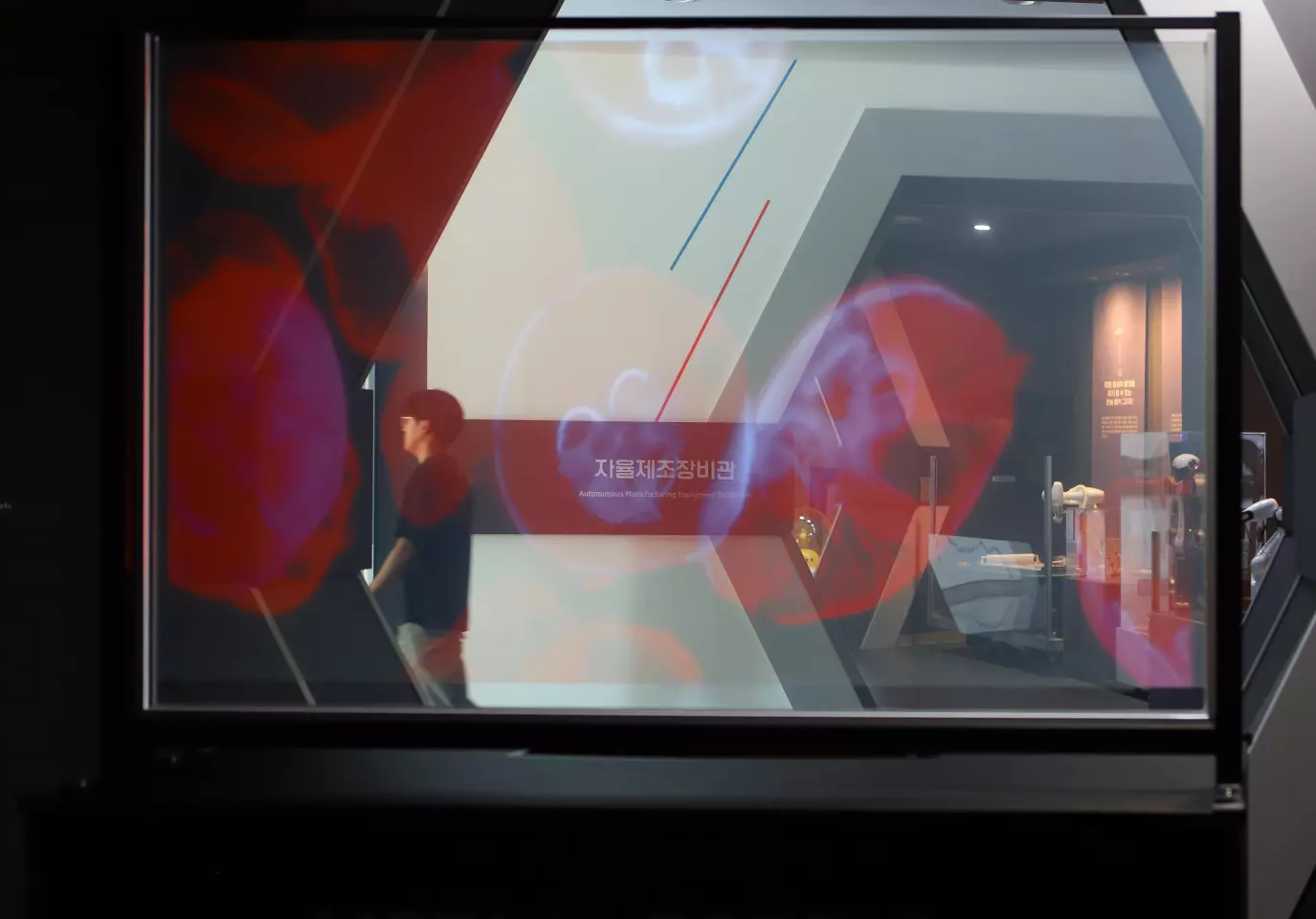Transparent OLED technology has come a long way since early prototypes more than a decade ago, but screens are still a pricey proposition. Korean researchers have developed a 100-inch NTS display for mass production at a tenth of the cost.
The technology has been developed and commercialized by a team from the Nano-lithography and Manufacturing Research Center of the Korea Institute of Machinery and Materials. The Nano Transparent Screen involves evenly distributing titanium dioxide nanoparticles – with a diameter of 100 nanometers – throughout a film that's reckoned "as thin as a human hair."
A high-resolution beam projector is used to throw widescreen images onto the film, producing quality visuals with a 170-degree viewing angle and which can be seen on either side of the display. A Polymer Dispersed Liquid Crystal film can be added to the mix to adjust background opacity in super bright venues for improved image clarity.

The technology is reported to perform well in high/low temperature environments, and is designed to withstand weather extremes. Suggested applications include department store displays, smart windows and for promotional purposes inside or outdoors – in fact, the team demonstrated one such installation at the outdoor space of the "Youth Mall" in Gungju last month. And though televisions haven't been mentioned, the large NTS panels can show video content so that would seem to be a possibility.
The team notes that a conventional 100-inch transparent OLED screen can be priced at more than KRW 100 million (which converts to over US$72k), while less expensive transparent LED technology has not been widely adopted due to low resolution output.

The researchers claim that mass-produced NTS displays "can be supplied to the market at around 10% of the price of transparent OLED screens." Relatively lightweight transparent screens measuring more than 100 diagonal inches should also be possible, along with flexible films for custom installations. The technology is now being commercialized through a spin-off company.
"The technology for manufacturing Nano Transparent Screens is a cutting-edge, innovative technology created through the combination of nanomaterials and nanomanufacturing technology with existing IT technologies." said principal researcher on the project, Jun-Ho Jeong. "Going forward, we will focus on research and development to continuously improve the quality of NTSs and lead the popularization of transparent screens."
Source: KIMM






